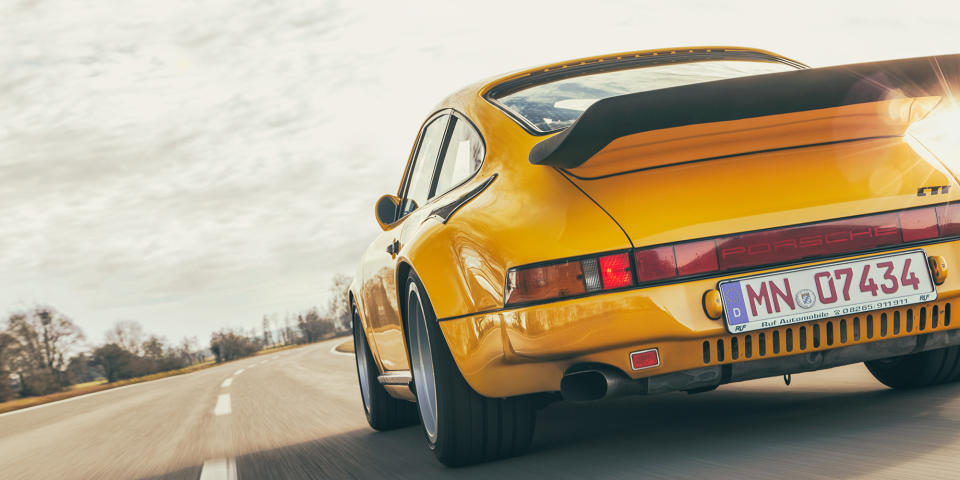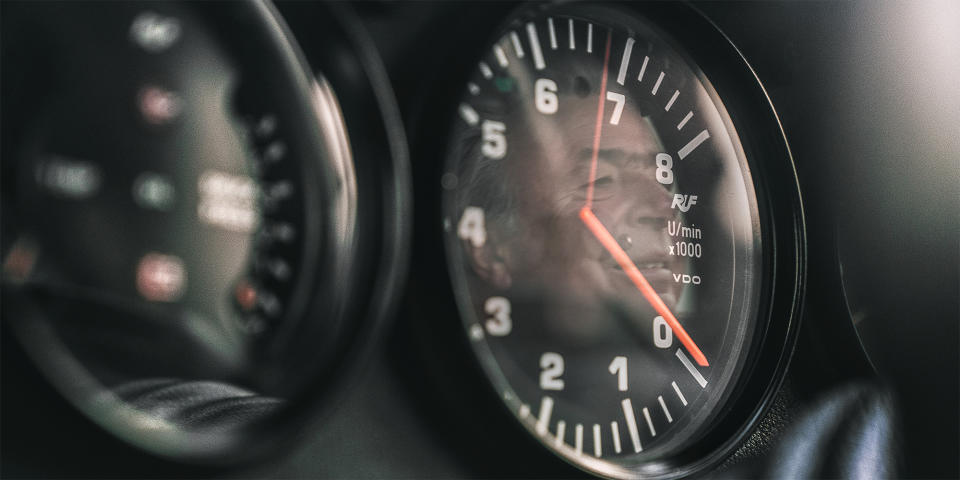Reliving the RUF CTR "Yellow Bird" Legend

ROAD & TRACK has taught me a lot, but the first thing I remember it telling me was that Ayrton Senna was dead. Those quicksilver hands and that yellow helmet, the last fiery icon in Formula 1, snuffed at 34.
It was 1994. I was 13, and I had never bought a car magazine. That first one I paid for had a $2.95 cover price and an August date. I still have the thing, though I don’t know why. All I know is that every time I try to throw it away, my arms freeze up.
Senna died in May of that year. By August, when this magazine ran his obituary, I still had no clue he was gone. I barely knew he was alive to begin with. Our city paper didn’t cover motorsport, and at 13, I wasn’t reading it anyway. I didn’t watch F1 on TV, and the nightly news always put me to sleep. Senna was just this guy overseas, in a sport I little understood.
And then he died, in a race at Imola, and my $2.95 stack of paper was upset. So I read.
I had been reading for years. Voraciously. Mostly history and fiction, from my father’s bookshelf, because that’s what was in the house and free. This is probably why, as the world’s dorkiest middle schooler, I wanted little more than a Jaguar D-type, a Ruf CTR, a North American X-15 rocket plane, a motorcycle, a brown-haired girlfriend who would talk to me while I fixed said motorcycle and brooded demonstrably, and a print of a photograph taken by Jesse Alexander in 1962, of Jim Clark at Spa. (Black and white, goggles around his neck, eyes boring a hole in the camera. A whole era wrapped up in smoky silver.)
Clark died at Hockenheim, in a Formula 2 car, 13 years before I was born. The most graceful driver of a generation, but just one hero from a litany, and those books: Colin Chapman, the virtuoso behind Lotus. Dan Gurney. Phil Hill and Paul Frère, who each had astonishing careers in the cockpit and then went to work for R&T. Hundreds of other artists and iron men, from prewar Indy to NASA.
All of them either died or wrapped their glory days before my time. That’s what happens when you find an obsession through its history - you gravitate to emotion, and that usually means years ago, because nobody writes an epic poem about yesterday afternoon. I became convinced I was born too late.
Until Senna. A polarizing risk of a man in a sport that had long seemed safe and level. I read those pages again and again, feeling emptier each time. One of history’s brightest sparks, missed, because I was too busy pining for the past.

Memories have a habit of going accordion, making old turning points seem like yesterday. But if Road & Track is 70, then Ayrton Senna has been gone for 23 years. The average 2017 F1 reporter couldn’t pick Jim Clark out of a lineup. Time dims the stage lights on everybody.
And then there’s the Ruf CTR.
Or rather, the CTR, CTR001, the prototype. Thirty years ago, in a tiny garage in Germany, a man named Alois Ruf disassembled a late-model Porsche 911. When he put it back together, it had two turbochargers and a body so pared down, the radio antenna was taped to the windshield. A week later, in an R&T test with Frère, Hill, and a mess of factory-built supercars, it went 211 mph. Faster than any road car this magazine had ever seen. We nicknamed it “Yellow Bird,” after the color and how it moved. Ruf tooled up for production, the world beat a path to his dyno room, and the Bird became one of the most beloved European cars in history.
I didn’t discover that test until 10 years after it happened. Not a too-late jaw drop, though. Clark and Senna are gone, but you can find a 1980s 911 on half the street corners in America. They’re relatable, attainable commodities, which is why whipping one to 211 mph seems both touchable and voodoo, even in 2017. Which, in turn, may have been why I went to find Alois himself. Last winter, in southern Germany, when the Alps were dark and tipped with clouds. I figured the man would know something about perspective.
He still owns the car, essentially as it was. Blinding yellow paint, a mad howler of an engine, value like a lottery jackpot. But there was more there than just old 911. It was real and storied in a way I couldn’t grasp or describe, a breathing piece, the magazine’s golden age writ in Technicolor. Countless wins and losses, millions of words. Paul and Phil but also John Bond’s manners, Henry Manney’s raised eyebrow, Peter Egan’s quiet optimism, in everything from the antenna tape to the hand-formed NACA ducts in the rear fenders.
Old cars tend to ooze stories, but this was different. Possibly because the owner was different. Possibly because he fed me an espresso when I walked in the door, then insisted we rip the Bird’s tach needle off the peg.
We talked for hours. Even in this straightforward industry, defined by numbers and regulation, the man bubbles with happy surprises. Ruf’s reputation could float his business for years, but he keeps chasing new projects, machines made better and more involving and smarter. Like most of my heroes, he seems incapable of discussing his life without laughing.
And as with Senna and Clark, no one saw him coming. Ruf’s appearance reaffirmed everything we care about around here. That surprises are constant if you know where to look. That while you can often guess the arc of the world, you can’t predict the points that plot the curve. Or the power of a reset that shows up just when you need it.
Maybe that’s why I kept the issue. I didn’t know much at 13, but what little I did, I don’t want to forget.
You Might Also Like

 Yahoo Autos
Yahoo Autos 